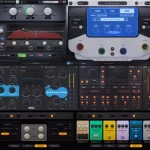Gumroad – Meshfusion Demystified – Part 1 – Foundation with Richard Yot Free Download

Title: Gumroad – Meshfusion Demystified – Part 1 – Foundation with Richard Yot
Info:
This tutorial is designed to give you a solid foundation for working with Mesh Fusion in Modo. It will teach you the best strategies to approach a Mesh Fusion model, from planning the initial topology to creating production-ready meshes while avoiding common pitfalls and problems.
Mesh Fusion is the most robust and easy to use boolean system for SDS modelling, and it allows for the creation of very complex hard-surface models with simple shapes as building blocks. The thoughtful strategies outlined in this tutorial will greatly facilitate your work and help you avoid issues when creating complex models.
The tutorial starts from the ground up, laying out the basics in order to build a solid foundation, then moves on to more detailed discussions of topics such as the ideal topology of source meshes, how to create final meshes with the best possible UVs, how to avoid Mesh Fusion errors, and how to blend Mesh Fusion Strips with source mesh edge bevelling.
The tutorial also explores the pros and cons of using procedural models versus destructive modelling for source mesh creation, outlining the advantages and disadvantages of both approaches.
A technique which uses N-Gons as the source of trim meshes is shown, allowing for a great deal of freedom when it comes to creating cutter geometry, freeing artists from having to plan fussy SDS trim meshes.
Finally, a step-by-step hard surface modelling tutorial completes the training, building an asset (a key) which would be extremely difficult to create with standard SDS modelling methods. With Mesh Fusion the model is straightforward to create, and also to edit afterwards (which would be impossible with a regular SDS model).
This training is part one of a two-part tutorial, with the next instalment tackling a more complex and advanced modelling challenge. Part one lays the fundamentals, before moving on to more difficult modelling tasks in part two.


![Videohive Collection Jan 7 2019 Free Download [Win-Mac]](https://www.goaudio.net/wp-content/uploads/2019/01/Videohive-Collection-Jan-7-2019-Free-Download-60x60.jpg)





![Toontrack Hollowbody EBX [WIN+MAC]](https://www.goaudio.net/wp-content/uploads/2024/09/Toontrack-Hollowbody-EBX-150x150.png?v=1726103695)
![Toontrack LATEST RELEASES MIDI BUNDLE [SEP 2024]](https://www.goaudio.net/wp-content/uploads/2024/09/gandr-collage-11-150x150.jpg?v=1725764744)
![Blockbuster Sound Sand Dune & Mockingbird [BUNDLE]](https://www.goaudio.net/wp-content/uploads/2024/08/blockbuster-sound--150x150.png?v=1724378090)

![Blockbuster Sound Mermaids Sirens & Horror Pack [BUNDLE]](https://www.goaudio.net/wp-content/uploads/2024/08/Blockbuster-Sound-150x150.png?v=1723854097)



![AEJuice I Want To Learn It All Bundle 2024 [NEW]](https://www.goaudio.net/wp-content/uploads/2024/12/juice-150x150.webp)


